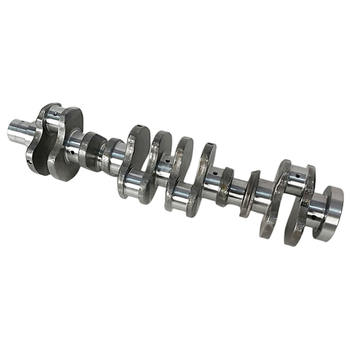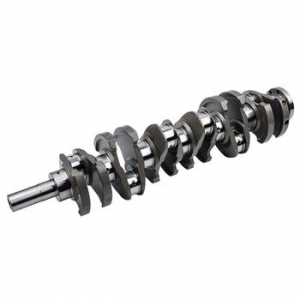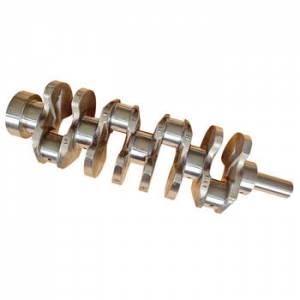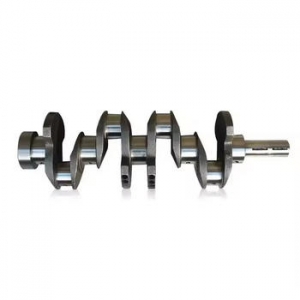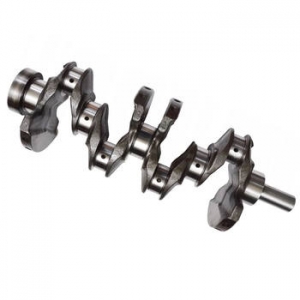When you think about the heart of your GM Chevrolet S10, D-Max, or Luv equipped with the robust 2.4-liter engine, the component that truly orchestrates the conversion of linear piston motion into rotational energy is the crankshaft. It's a complex, highly stressed part, engineered to withstand immense forces and temperatures within the engine block. Specifically, for these vehicles and this particular engine variant, we often encounter references to crankshaft part numbers such as 93282387, 93281999, and 93282250. These numbers aren't just arbitrary digits; they represent crucial components vital to the engine's operation. Understanding the significance of these specific part numbers, their interchangeability (if any), and their role within the 2.4L engine ecosystem is fundamental for anyone involved in maintaining, repairing, or restoring these popular GM vehicles. Frankly speaking, the crankshaft is arguably the single most critical rotating component in an internal combustion engine, and its integrity directly dictates the engine's performance, longevity, and reliability. Ignoring its condition or using a substandard replacement can lead to catastrophic engine failure, a scenario nobody wants to face. This article delves deep into these specific crankshafts, shedding light on what makes them essential and why choosing the right one matters immensely for your S10, D-Max, or Luv 2.4.
Let's start by dissecting the function of the crankshaft itself within the 2.4L engine. Imagine the pistons moving up and down inside the cylinders as combustion occurs. This vertical, or linear, motion is powerful, but it's not what ultimately drives the vehicle's wheels. The crankshaft's primary job is to take this linear power and convert it into rotational motion that can be transmitted through the transmission, driveshaft, and axles to the wheels. It does this via connecting rods, which link each piston to a crank pin on the crankshaft. As a piston is forced downwards by combustion, it pushes on the connecting rod, which in turn pushes on the crank pin, causing the entire crankshaft to rotate. The design of the crankshaft, with its main journals (where it rides in bearings in the engine block) and rod journals (where connecting rods attach), is a marvel of engineering. For the GM 2.4L engine in models like the S10, D-Max, and Luv, this conversion process happens thousands of times per minute. The crankshaft must be incredibly strong, precisely balanced, and manufactured to tight tolerances to handle the continuous, varying loads without flexing, fracturing, or vibrating excessively. Its design, including the throws and counterweights, is specific to the firing order and dynamics of the 2.4-liter four-cylinder configuration.
Now, let's address the specific part numbers: 93282387, 93281999, and 93282250. Why are there potentially multiple numbers for what seems like the same component for the same application? Interestingly enough, auto manufacturers often use different part numbers for the same fundamental component over time due to various reasons. These could include revisions to the design (even minor ones like material composition or surface treatments), different manufacturing plants supplying the part, or simply sequential part number assignments as production evolved. It's also possible that one number superseded another, meaning a newer number replaced an older one, and the newer part is designed to be fully compatible with applications that originally used the older part. Without official documentation from GM detailing the history of each specific part number for the 2.4L S10, D-Max, and Luv engines, pinpointing the exact distinctions between 93282387, 93281999, and 93282250 can be challenging. However, the fact that they are commonly referenced together for this specific engine suggests a high degree of interchangeability or direct supersession. When dealing with critical engine internals like the crankshaft, it is absolutely paramount to ensure the part you acquire is explicitly listed as compatible with your specific vehicle's year, model, and engine variant. Trusting compatibility based solely on visual resemblance can be a costly mistake.
The materials and manufacturing processes used to create a crankshaft are crucial for its performance and lifespan. For engines like the 2.4L in the S10, D-Max, and Luv, crankshafts are typically forged from high-strength steel alloy or sometimes cast from nodular iron. Forging involves shaping heated metal through immense pressure, resulting in a very strong, durable structure with a favorable grain flow that follows the shape of the part. Cast crankshafts, while potentially less expensive to produce, are generally used in lower-stress applications unless they are specifically engineered from robust materials like nodular iron and possibly heat-treated. After the basic shape is formed, the crankshaft undergoes extensive machining processes. This includes precisely grinding the main and rod journals to exact diameters and surface finishes, drilling oil passages to ensure proper lubrication, and balancing the entire assembly. Balancing is critically important; an improperly balanced crankshaft will cause excessive vibration, leading to premature wear on bearings and potentially other engine components. The crank pins and main journals are also often heat-treated, such as through induction hardening or nitriding, to increase their surface hardness and wear resistance, especially where they interface with the engine bearings. This level of precision and material integrity is what allows the crankshaft to endure the continuous power strokes and inertial forces within the engine.
Operating conditions within the 2.4L engine are incredibly demanding on the crankshaft. Think about the combination of heat generated by combustion, the friction in the main and rod bearings, and the dynamic forces from the pistons and connecting rods. Engine lubrication plays a vital role in protecting the crankshaft and its bearings. A thin film of oil separates the rotating crankshaft journals from the stationary bearings in the block and connecting rods. This hydrodynamic lubrication prevents metal-to-metal contact, significantly reducing wear and friction. If the oil pressure is insufficient, the oil level is too low, or the oil is contaminated or degrades, this critical oil film can break down. When lubrication fails, even for a short period, direct contact between the crankshaft journals and bearings occurs, leading to excessive heat, rapid wear, and potentially bearing failure, often referred to as "spinning a bearing." This is a common cause of crankshaft damage requiring replacement. Other factors that can stress or damage the crankshaft include engine over-revving, hydro-lock (where liquid enters the cylinder and the piston tries to compress it), and major internal engine failures like a broken connecting rod. Regular maintenance, particularly timely oil changes with the correct type and viscosity of oil, is the single best preventative measure to protect your crankshaft and the associated bearings in your GM 2.4L engine.
Identifying a potential issue with the crankshaft or its related components in your GM Chevrolet S10, D-Max, or Luv 2.4 can save you from more severe damage down the line. What are some signs that might suggest a problem? One of the most telling symptoms is a deep knocking or rapping sound originating from the engine block, often referred to as a "rod knock" or "main bearing knock." This noise is typically caused by excessive clearance between a crankshaft journal and its corresponding bearing, allowing the connecting rod or crankshaft itself to strike the bearing saddle with each rotation. The sound often becomes louder and more pronounced under load or as engine speed increases. Another indicator can be consistently low oil pressure, although this is a symptom rather than a direct cause in this instance; low pressure means inadequate lubrication, which accelerates wear on the crankshaft and bearings. Metal particles found in the engine oil during a change are also a red flag, as they often indicate wear occurring on internal components like bearings or journals. Excessive vibration that wasn't previously present, particularly at certain engine speeds, could also potentially point to a crankshaft balance issue, though this is less common as a failure mode unless the crankshaft was previously damaged or improperly replaced. Have you ever heard a distinct knocking sound from an engine and wondered what component could be causing it? Often, the crankshaft and its bearings are the prime suspects.
Replacing a crankshaft in any engine, including the 2.4L in the S10, D-Max, or Luv, is a major undertaking. It involves essentially disassembling the lower half of the engine, which means removing the oil pan, possibly the cylinder head(s), the oil pump, and accessing the main bearing caps and connecting rod caps. The engine might even need to be removed from the vehicle for proper access and workspace. Once the old crankshaft is removed, the engine block and connecting rods need thorough inspection. The main bearing saddles in the block and the bearing bores in the connecting rods must be checked for damage, alignment, and size. The new or reconditioned crankshaft must be carefully installed with new main and rod bearings. Choosing the correct size of replacement bearings is critical, as they must match both the size of the crankshaft journals and the size of the bores in the block and connecting rods. Standard sized journals use standard bearings, but if the crankshaft has been reground to repair wear, it will have undersized journals requiring corresponding undersized bearings. Proper torque specifications and procedures for installing the bearing caps are paramount to ensure correct bearing crush and alignment. Frankly speaking, this is not a job for the faint of heart or the inexperienced DIY mechanic. It requires specialized tools, precise measurements, and a deep understanding of engine assembly principles. Getting any step wrong during crankshaft installation can lead to immediate or rapid engine failure.
Given the complexity and critical nature of the crankshaft, particularly when dealing with part numbers like 93282387, 93281999, and 93282250 for the GM 2.4L in the S10, D-Max, and Luv, ensuring you acquire a high-quality replacement part is non-negotiable. The market offers options ranging from brand new original equipment (OE) parts, new aftermarket parts, and remanufactured crankshafts. OE parts are typically the benchmark for quality and fitment, as they are manufactured to the vehicle maker's original specifications. New aftermarket crankshafts vary widely in quality; it's essential to source these from reputable manufacturers known for adhering to strict quality control standards. Remanufactured crankshafts are used crankshafts that have been inspected, cleaned, dimensionally checked, reground if necessary, and often heat-treated and re-balanced to meet specifications. A properly remanufactured crankshaft can be a cost-effective option, but again, the quality of the remanufacturing process is key. I've found that focusing on suppliers who provide detailed specifications, undergo rigorous testing, and offer warranties provides significant peace of mind when purchasing such a critical component. The cost savings of a cheap, low-quality crankshaft are insignificant compared to the potential cost of rebuilding the engine again if the replacement part fails prematurely. Why is choosing a reputable supplier so important for parts like these? Because the precision required is astonishingly high – tolerances are measured in microns.
Quality control in the manufacturing or remanufacturing of crankshafts for applications like the GM 2.4L S10, D-Max, and Luv is a multi-step process designed to ensure the finished product meets stringent performance and durability standards. It begins with selecting the appropriate raw material, whether it's a steel forging or a nodular iron casting. During machining, critical dimensions such as journal diameters, fillet radii (the curved transition between the journal and the crank arm), and stroke length are constantly monitored using highly accurate gauges. Surface finish on the journals is also critical for proper bearing lubrication and longevity; too rough, and it causes wear; too smooth, and the oil film might not adhere properly. Balancing is performed using specialized machines that detect imbalances and guide the removal of small amounts of material from the counterweights until the crankshaft is dynamically balanced within tight specifications. Non-destructive testing methods, such as magnetic particle inspection, are often used to check for microscopic cracks or flaws that could propagate under stress. Furthermore, if the crankshaft undergoes heat treatment, the process parameters are carefully controlled and the resulting hardness is tested. For aftermarket or remanufactured crankshafts compatible with 93282387, 93281999, or 93282250, a good supplier will be transparent about these quality processes. In my experience, companies that invest heavily in quality control tend to produce parts that perform reliably in the real world, under the harsh conditions of an operating engine.
When searching for replacement crankshafts that cross-reference or are compatible with GM part numbers 93282387, 93281999, and 93282250 for your Chevrolet S10, D-Max, or Luv 2.4L engine, it's wise to consult reliable sources. Vehicle service manuals or parts catalogs specific to the exact year and model of your truck are invaluable. These resources often list the original part number and any superseding numbers. Reputable automotive parts suppliers, especially those specializing in engine components, should be able to provide accurate cross-reference information and confirm compatibility. Be wary of generic listings that don't specify the engine size and vehicle model precisely. The 2.4L engine used in these trucks has specific requirements for its crankshaft that might differ significantly from a crankshaft for a different engine, even within the same vehicle model lineup. A slight variation in stroke length, journal diameter, counterweight design, or balancing can lead to improper fitment, poor performance, or rapid failure. Ensuring that the crankshaft you choose is manufactured to the correct specifications for the 2.4L application is absolutely vital for a successful repair and the long-term health of your engine. This diligence in selecting the correct part pays dividends in terms of engine reliability and avoiding repeat repairs.
In conclusion, the crankshaft, whether identified by part number 93282387, 93281999, or 93282250, is an indispensable component of the GM Chevrolet S10, D-Max, and Luv 2.4L engine. Its role in converting the engine's power into usable rotation is foundational to the vehicle's ability to move. Understanding its function, the stresses it endures, the signs of potential failure, and the importance of quality when seeking a replacement is crucial for any owner or technician. The precision engineering, quality materials, and meticulous manufacturing processes involved in producing a reliable crankshaft are what allow it to perform its demanding job day after day. When faced with a crankshaft issue in your 2.4L GM truck, selecting a high-quality, correctly specified replacement is paramount. It's an investment in the longevity and performance of your engine. We understand the challenges of finding reliable engine components for specific applications like these older GM models. Our company focuses on providing high-quality auto engine parts, including crankshafts compatible with these specifications, manufactured to meet or exceed original standards. We strive to help you get your vehicle back on the road with confidence, knowing you've installed a critical component built for durability and precise fitment within the 2.4L engine. Replacing a crankshaft is a significant repair, and having access to dependable parts makes all the difference in achieving a successful outcome and restoring your engine's vitality.
For more detailed information, please visit our official website: 93282387 crankshaft

